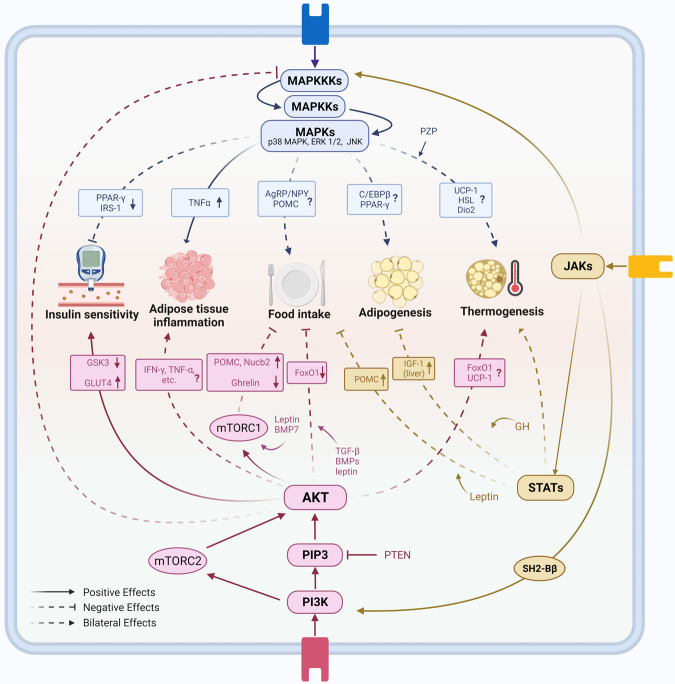Fig. 2.
MAPK, PI3K, and JAK/STAT signaling pathways in obesity pathogenesis. MAPK signaling pathway includes a three-tiered kinase cascade consisting of MAPK kinase kinases (MAPKKKs), MAPK kinases (MAPKKs), and MAPKs. MAPKs such as ERK1/2, JNK, and p38 MAPK play complicated roles in adipogenesis and appetite regulation. Activation of MAPKs induced adipose tissue inflammation in obesity. MAPKs also cause insulin resistance in obesity by inactivating IRS1 directly and PPAR-γ indirectly. MAPKs signaling pathway plays diverse roles in adipose tissue browning and thermogenesis. PI3K-AKT pathway is closely related to insulin signaling. It increases GLUT4 and downregulates GSK3, resulting in insulin effects. PI3K-AKT signaling in lymphoid cells reduces adipose tissue inflammation to fight against obesity, while it results in the opposite direction in myeloid cells. Besides, PI3K-AKT-mTOR signaling negatively regulates food intake and has a bidirectional effect on thermogenesis. JAK-STAT signaling pathway consists of JAK1, 2, and 3, and STAT family includes STAT1, 2, 3, 4, 5a, 5b, and 6. JAKs cannot only activate STATs, but also MAPKKKs and PI3K. JAK-STAT pathway participates in leptin-mediated anorectic effects. In the liver, the activation of JAK-STAT signaling is negatively related to the accumulation of fat. Notably, there are different impacts from different JAKs and STATs on BAT-related thermogenesis

